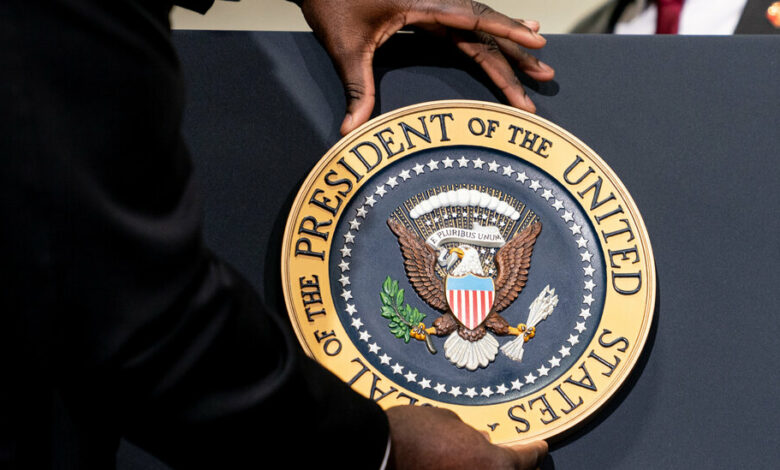Immunity ruling accelerates long rise of presidential power

The Supreme Court’s decision to grant presidents immunity from prosecution for official acts is an extraordinary expansion of executive power that will reverberate long after Donald J. Trump is gone.
Beyond its immediate implications for Trump’s election fraud case and the prospect that he will feel less constrained by the law if he returns to office, the ruling also contributes to the almost inexorable rise of presidential power since the mid-20th century.
It seemed like a constitutional truism in recent years when more than one lower court ruling on novel legal issues raised by Trump’s norm-breaking behavior noted that presidents are not kings. But suddenly they enjoy a kind of monarchical prerogative.
“The relationship between the president and the people he serves has been irrevocably altered,” Justice Sonia Sotomayor wrote in an indignant dissent, joined by the court’s other two liberals. “In every use of official power, the president is now a king above the law.”
Chief Justice John G. Roberts Jr., writing for the majority, dismissed these concerns, arguing that presidents are distinct from ordinary citizens and that it is therefore necessary to protect them from prosecution when they are accused of abusing their powers to commit official crimes.
“Unlike any other,” he wrote, “the President is a branch of government, and the Constitution vests in him far-reaching powers and duties.”
He added: “Acknowledging that reality — and ensuring that the president can exercise those powers by force, as the Founders expected him to do — does not place him above the law; it preserves the basic structure of the Constitution from which that law derives.”
These conflicting claims about what risk the Founders intended the Constitution to protect against will go down in the annals of a generations-long debate over the powers of the president.
No former president before Mr. Trump has been charged with crimes committed during his presidency. That has raised questions about whether previous presidents were immune, and the Justice Department under President Biden violated a norm by appointing a special counsel to charge Mr. Trump — or whether it was simply that most other presidents were not criminals.
After Richard M. Nixon resigned to avoid impeachment for his abuse of power in the Watergate scandal, his successor, Gerald R. Ford, ended a criminal investigation into Nixon by pardoning him. The move was so unpopular that it may have cost Ford the 1976 election.
Nixon accepted the pardon. But according to Monday’s Supreme Court ruling, the entire exercise was apparently unnecessary.
Before Nixon was forced to resign, the executive branch had been in the ascendant for decades. As World War II turned into the early Cold War, presidents of both parties began to act more unilaterally, particularly on matters of national security, while asserting constitutional rights to keep information secret from Congress and the courts.
Historian Arthur C. Schlesinger Jr. described this pattern in a 1973 book as “the imperial presidency.” The revival reached a peak with Nixon, who later summarized his philosophy of executive power as “when the president does it, that means it’s not illegal.”
The trend paused in the mid-1970s due to Watergate, the Vietnam War, and a congressional investigation that revealed abuses of domestic intelligence by administrations of both parties. During this period, Congress attempted to restore checks and balances with a series of new laws and oversight actions.
But beginning with the Reagan administration in the 1980s, those constraints began to crumble. Ronald Reagan and his team tried to push an activist conservative policy program despite resistance from a Congress long controlled by Democrats.
As a result, lawyers in his administration developed constitutional theories that would allow Reagan to do whatever he wanted, even if Congress said otherwise. One such theory, for example, was the so-called unitary executive theory, which holds that Congress cannot break a president’s control over the executive branch by granting independent decision-making authority to, say, a regulatory agency.
To be sure, Democratic presidents have pushed the boundaries on individual issues as well. Executive power often operates like a one-way ratchet: It’s easier to expand than to roll back, because the innovations of one president become a baseline of precedents that successors in either party can build upon when a perceived need arises.
But the political circumstances of the Reagan era led to the push to expand presidential power being absorbed into the conservative legal movement that spread during the same period and that has shaped ambitious Republican lawyers.
Over time, that attitude has also permeated the highest echelons of the judiciary, as Republican presidents have nominated lawyers who were not only ideologically conservative but also had backgrounds in the executive branch.
Three members of the Supreme Court’s conservative supermajority — Chief Justice Roberts and Justices Clarence Thomas and Samuel A. Alito Jr. — were lawyers from the Reagan administration.
Two others, Justices Neil M. Gorsuch and Brett M. Kavanaugh, served in the George W. Bush administration. It promoted a broad view of the president’s exclusive constitutional powers, particularly in the kinds of national security cases that came up frequently after the terrorist attacks of September 11, 2001.
Only Justice Amy Coney Barrett, a former law professor, has never worked as an executive lawyer. Notably, even as she joined the majority opinion, she issued a more subdued concurrence, joining the dissent on the question of whether prosecutors should at least be able to tell juries about a president’s official actions if they provide relevant context for understanding the unofficial actions for which he is being prosecuted.
The structure of accountability—or lack thereof—for official presidential crime under which the country now lives, as laid out in Chief Justice Roberts’ majority opinion, falls into three categories.
The first are unofficial crimes that happen to be committed by someone who is president, but that fall completely outside the perimeter of presidential responsibilities. In theory, a former president could still be prosecuted for these types of crimes.
At the other end of the spectrum are crimes that a president commits as part of his “core” constitutional powers and responsibilities. Congress cannot interfere with how a president exercises those powers through criminal law, the majority said.
Presidents can thus freely abuse these powers with absolute immunity from later prosecution. This category clearly includes at least the powers that are in the Constitution, such as granting pardons or vetoing legislation.
But the majority opinion said that category also applies to Trump’s effort to pressure Justice Department officials to investigate false claims of voter fraud.
Chief Justice Roberts wrote that a president “has exclusive authority over the investigative and prosecutorial functions of the Justice Department and its officials.” Under that measure, he said, “the president may discuss potential investigations and prosecutions with his attorney general and other Justice Department officials” under the constitutional duty to “take care that the laws be faithfully executed.”
This sentence was particularly striking because since Watergate, there has been a norm of Justice Department investigative independence from White House oversight. But Mr. Trump has already undermined that norm during his administration, and has openly vowed that, if he were to return to power, he would use the Justice Department to exact revenge on his enemies.
Finally, the majority opinion outlined a third, more ambiguous category. This includes official actions a president takes that are not core executive powers, so Congress shares overlapping authority over them and, in theory, criminal laws could apply to them.
A president has “presumed” immunity from criminal prosecution for actions that also fall into this category, the majority opinion said, but that shield could be breached if prosecutors “can show that applying a criminal prohibition to that action would not create ‘dangers of intrusion on the authority and functions of the executive branch.’”
In her dissent, however, Justice Sotomayor portrayed that supposed distinction as ludicrous. In practice, she said, it will be essentially impossible for prosecutors to show that there is “no” danger of such interference.
She stated that the majority had invented a “lawless zone” around the president that will remain a “loaded weapon” for future occupants of the White House to wield, and she listed “nightmare scenarios”:
“The Navy SEAL orders Team 6 assassinates a political rival? Immune. Stages a military coup to stay in power? Immune. Takes bribes for a pardon? Immune. Immune, immune, immune.”
Chief Justice Roberts called that litany of possible wrongdoing “fear-mongering based on extreme hypotheses.” The dissenting justices, he wrote, overlooked “a more likely prospect of a cannibalizing executive branch, with each successive president free to prosecute his predecessors but unable to perform his duties courageously and fearlessly for fear that he might be next.”
But Justice Sotomayor accused the majority of being so fixated on the president’s need for boldness and speed that it ignored “the opposing need for accountability and restraint.” Never before in American history, she added, have presidents had reason to believe they would be immune from prosecution if they used their office to commit crimes.
“But in the future, all former presidents will be cloaked in such immunity,” she wrote. “If the occupant of that office abuses official power for personal gain, the criminal law that the rest of us must abide by will provide no safety net.”




